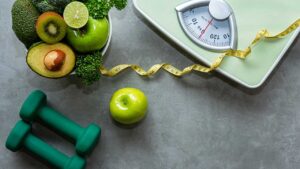If you are willing to take just one piece of nutritional advice, think about increasing dietary fiber.
Technically, dietary fibers are chains of sugar molecules that are in a nutritional category of their own. Because of the way the sugar molecules are linked, fiber in food cannot be directly digested and absorbed into the body*, yet it still provides very valuable nutritional benefits. Dietary fiber has the ability to lower blood glucose, lower cholesterol levels, lower blood pressure, improve the motion of food through the intestines, and more. In short, it is an amazing prescription for overall health.
The USDA recommends that women consume 25 grams and men 38 grams of fiber per day (from food, not supplements).
That said, not all dietary fiber is created equal. There are two main categories in terms of food manufacturing:
- Intact / Intrinsic – Naturally occurring in food such as vegetables, whole grains, and fruits. The intact fibers have not been removed from the food, and these fibers are known to be beneficial.
- Isolated / Synthetic – Nondigestible carbohydrates that have been extracted from plants. The isolated fibers are added to foods, and the FDA must first evaluate if the fiber has a beneficial effect before it is considered to be dietary fiber.
The nutrition facts label on food packaging indicates grams of fiber per serving, but it does not reveal whether the fiber is intact or isolated.
A primary reason manufacturers add synthetic fiber to a product is because consumers are on the lookout to increase their fiber intake. These are examples of isolated or synthetic fiber:
- beta-glucan
- psyllium husk
- cellulose
- guar gum
- pectin
- locust bean gum.
While isolated fibers can have some health benefits, they are not real food. Current USDA recommendations suggest getting your fiber from vegetables, fruits, nuts, seeds, legumes, and whole grains.[1] These foods provide not only a healthy dose of fiber, but countless other health benefits.
All things to keep in mind on your next trip to the grocery store.
*Dietary fiber can be broken down by gut bacteria, and in fact it is a primary nutrient for such bacteria, which are known to play an important role in health.
References
[1] https://ask.usda.gov/s/article/How-much-dietary-fiber-should-I-eat





